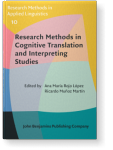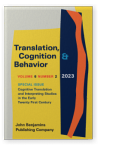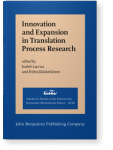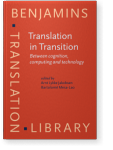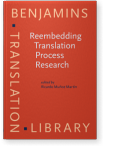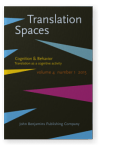Kristian Tangsgaard Hvelplund
List of John Benjamins publications for which Kristian Tangsgaard Hvelplund plays a role.
2025 Chapter 9. Screen eyetracking Research Methods in Cognitive Translation and Interpreting Studies, Rojo López, Ana María and Ricardo Muñoz Martín (eds.), pp. 213–234 | Chapter
Eye-tracking has emerged as a pivotal method in studying visual processing and cognitive load, providing invaluable data for linguistic and psycholinguistic analyses. In translation and interpreting research, eye-tracking technology has become central in empirical investigations into translation… read more
2023 Wearable eye trackers: Methodological challenges, opportunities and perspectives for sight interpreting/translation Cognitive Translation and Interpreting Studies in the Early Twenty First Century, García, Adolfo M., Edinson Muñoz and Néstor Singer (eds.), pp. 164–186 | Article
Sight interpreting/translation (SiT) refers to the mode of communication in which source language information is received via reading and target language output is produced either in oral form or sign language. The cognitive aspect of SiT has been examined empirically with participant-,… read more
2018 Chapter 4. Genre familiarity and translation processing: Differences and similarities between literary and LSP translators Innovation and Expansion in Translation Process Research, Lacruz, Isabel and Riitta Jääskeläinen (eds.), pp. 55–76 | Chapter
This paper presents the findings from a research project carried out with literary translators and LSP translators. The overall aim of the project is to explore if and to what extent text genre familiarity affects translation processing. The specific aim is to characterise and compare translation… read more
2017 Chapter 2. Four fundamental types of reading during translation Translation in Transition: Between cognition, computing and technology, Jakobsen, Arnt Lykke and Bartolomé Mesa-Lao (eds.), pp. 55–77 | Chapter
This chapter concerns reading during translation and the cognitive activities which underlie the different types of reading. Its aim is to characterise and discuss different kinds of reading during the translation process, and it does so through the exploration of recordings of eye movement data.… read more
2016 Cognitive efficiency in translation Reembedding Translation Process Research, Muñoz Martín, Ricardo (ed.), pp. 149–170 | Article
This article concerns the cognitive mechanisms that underlie the efficient allocation of cognitive resources during the translation process. Three indicators of efficient resource allocation are outlined and examined as correlates of translation expertise: flexibility, automaticity, and processing… read more
2015 Design and Statistics in Quantitative Translation (Process) Research Translation as a cognitive activity, Alves, Fabio, Amparo Hurtado Albir and Isabel Lacruz (eds.), pp. 170–187 | Article
